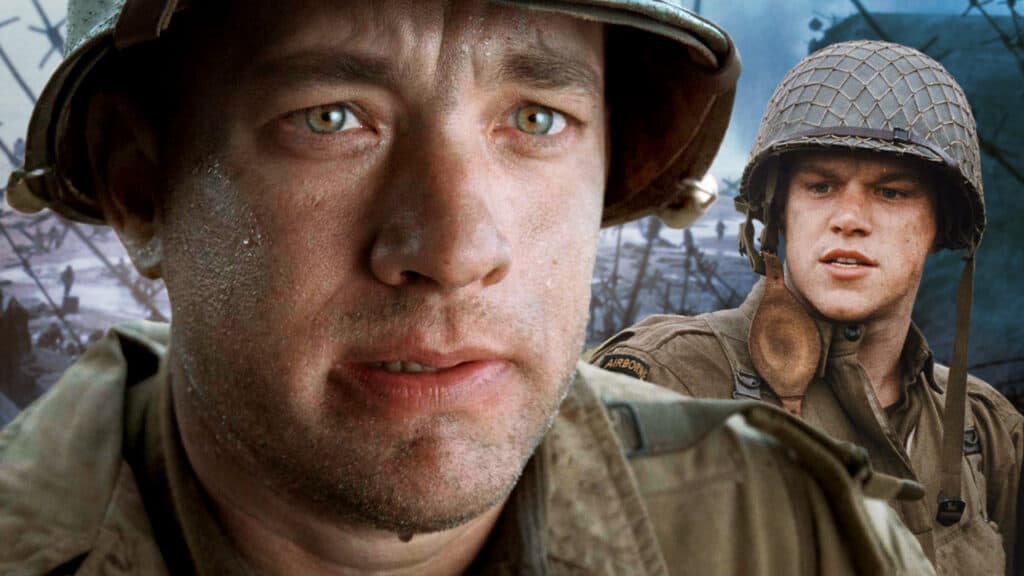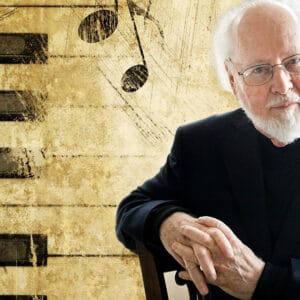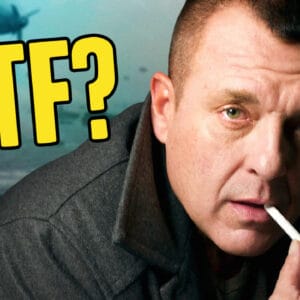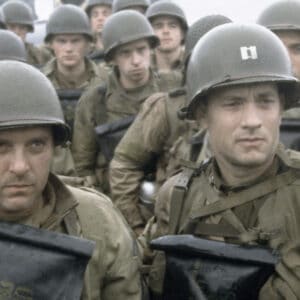Last Updated on November 21, 2023
Today is Veteran’s Day, and to mark the occasion we’re doing to dip into the true story that inspired one of the greatest war movies ever made. Steven Spielberg’s Saving Private Ryan is commonly referred to as one of the most effective war movies ever made. Released in July 1998, Private Ryan was quickly lauded for its brutal depiction of life in combat, with most people singling out its stunning, harrowing recreation of the invasion of Omaha Beach on June 6th, 1944. The film went on gross a surprising $481 million worldwide and won five Oscars, including Best Director for Spielberg, who dedicated the movie to his father, a World War II vet. While the film of course took many a page from the history books to tell its gripping tale, the overall story – about a platoon of soldiers dispatched to recover a young private after three of his brothers are killed in combat – was a work of fiction courtesy of screenwriter Robert Rodat. That said, there is a hint of truth to the plot of Spielberg’s epic in the story of the real-life Niland Brothers, and we’re going to find out What Really Happened to Saving Private Ryan.
We have Robert Rodat’s wife to thank for Saving Private Ryan; apparently she gifted her husband Stephen Ambrose’s non-fiction book “D-Day: June 6, 1944: The Climactic Battle of WWII.” Rodat was struck by one of the book’s many subplots, regarding the Niland brothers, four siblings from upstate New York who enlisted in the military around the same time to help their country’s fight against the Axis Powers in World War II. Fritz and Bob Niland were in the 501st and 505th Parachute Infantries, respectively; Preston Niland in the 22nd Infantry, and Edward Niland was in the air force. The brothers were spread out thanks to the Sole Survivor policy enacted by the U.S. Department of Defense, which was activated in 1942 when the USS Juneau was sunk by a Japanese torpedo, killing over 600 men. Five brothers, the Sullivans, were aboard the cruiser and perished, and soon after the military decided it would not allow brothers to serve in the same company going forward.
The shocking series of events that befell the Niland boys happened rather quickly: In May of 1944, Edward Niland’s plane was shot down by the Japanese over Burma and he was presumed dead. One month later came D-Day, which saw the other three Niland brothers participating in the seminal military action. Bob Niland was killed in action when his platoon was surrounded by Nazis; he died manning a machine gun, attempting to thwart the Germans while his fellow soldiers escaped. Preston Niland was killed the next day after storming Utah Beach. Preston made it inland and, along with his division, attempted to take a German battery but was killed during the action.
Fritz, meanwhile, had survived the D-Day invasion and several days later he went looking for his brother Bob in the 82nd Airborne Division. When he reached the division, he was hit with the news Bob had died valiantly. An army chaplain by the name of Father Francis Sampson was dispatched by the Defense Department to inform Fritz that, in addition to his brother Bob, his brother Preston was also deceased and his third brother Edward was presumed dead in Burma after his plane was shot down. With that terrible news, Father Sampson added that Fritz was being sent back home for the duration of the war.

There’s some disagreement on whether or not the parents of the Niland boys received the notices of the deaths of their three sons on the same day, as happens in Saving Private Ryan; some accounts say they did, others dispute that notion. Regardless, for a time the Nilands did indeed think they’d lost three boys in the span of just a few weeks.
But the news got a little better the next year. It turned out Edward was not dead after all; he’d been detained in a P.O.W. camp by the Japanese. The British liberated the camp almost a year after Edward had been shot down. He was reportedly a mere 80 pounds when he was rescued, but he was alive and on his way to recovery. He lived to the age of 72, while Fritz died in 1983 at the age of 63.
So while Saving Private Ryan indeed got its inspiration from the stunning story of the Niland brothers, screenwriter Rodat made things a little more dramatic with the plot device of having a group of soldiers sent to retrieve the Private in lieu of a priest. In terms of accuracy, it’s been said it would be supremely unlikely the military would risk the lives of several men to save just one, but that’s a bit of Hollywood seeping into the proceedings. All that said, there’s no doubt the courage of the Niland brothers, who volunteered to fight on behalf of their country, helped inspire one of the great war pictures of our time.




















Follow the JOBLO MOVIE NETWORK
Follow us on YOUTUBE
Follow ARROW IN THE HEAD
Follow AITH on YOUTUBE